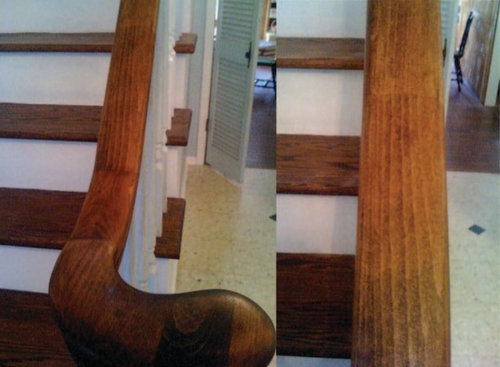If I'd known, I never would have started
eam44
11 years ago
Featured Answer
Comments (8)
User
11 years agolast modified: 9 years agoRelated Professionals
Foster City Cabinets & Cabinetry · Homer Glen Cabinets & Cabinetry · Rowland Heights Cabinets & Cabinetry · Atlanta Carpenters · Brandon Flooring Contractors · Crest Hill Flooring Contractors · Deerfield Beach Flooring Contractors · Eldersburg Flooring Contractors · Gilroy Flooring Contractors · Land O' Lakes Flooring Contractors · Petaluma Flooring Contractors · Westerville Flooring Contractors · Bronx Furniture & Accessories · Woodstock Furniture & Accessories · Rancho Santa Margarita Furniture & Accessorieseam44
11 years agolast modified: 9 years agosombreuil_mongrel
11 years agolast modified: 9 years agobobismyuncle
11 years agolast modified: 9 years agobobismyuncle
11 years agolast modified: 9 years agobrickeyee
11 years agolast modified: 9 years agoeam44
11 years agolast modified: 9 years ago
Related Stories

LIFEYou Said It: ‘I’m Never Leaving’ and More Houzz Quotables
Design advice, inspiration and observations that struck a chord this week
Full Story
DECORATING GUIDESHow to Decorate When You're Starting Out or Starting Over
No need to feel overwhelmed. Our step-by-step decorating guide can help you put together a home look you'll love
Full Story
GARDENING GUIDESHow to Stop Worrying and Start Loving Clay Soil
Clay has many more benefits than you might imagine
Full Story
KIDS’ SPACESSee an Arizona Nursery That’ll Never Get Old
Age appropriate but not childish, this baby boy’s room will grow with him without a redesign
Full Story
GARDENING GUIDES10 Tips to Start a Garden — Can-Do Ideas for Beginners
Green up your landscape even if you're short on time, money and knowledge, with these manageable steps for first-time gardeners
Full Story
DECORATING GUIDES9 Planning Musts Before You Start a Makeover
Don’t buy even a single chair without measuring and mapping, and you’ll be sitting pretty when your new room is done
Full Story
MOST POPULAR10 Things to Ask Your Contractor Before You Start Your Project
Ask these questions before signing with a contractor for better communication and fewer surprises along the way
Full Story
REMODELING GUIDESWhat to Consider Before Starting Construction
Reduce building hassles by learning how to vet general contractors and compare bids
Full Story
HOUSEPLANTSHow to Grow Orchids Indoors
Orchids are the exotic aristocrats of the flower world and can make themselves comfortable in almost any home
Full Story
CONTRACTOR TIPS10 Things to Discuss With Your Contractor Before Work Starts
Have a meeting a week before hammers and shovels fly to make sure everyone’s on the same page
Full StoryMore Discussions








bobismyuncle